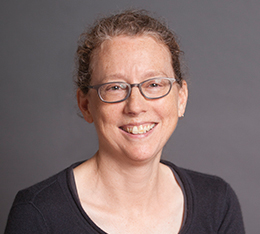With a robust higher education system and an ambitious goal of universal access, California is well-positioned to expand economic opportunity through higher education. At a virtual event last Friday, PPIC Higher Education Center director Hans Johnson outlined a new report on broadening the benefits of a college degree and talked with three higher education leaders about strategies for expanding access and completion.
The PPIC report finds that college graduates experience large wage gains and are relatively insulated from recessions—including the current downturn. But the benefits of a college degree vary across demographic groups, and low-income, Latino, and African American students in California are less than half as likely to make it from 9th grade to a bachelor’s degree as their peers.
How can California’s policymakers and higher education institutions widen the pathway to a college degree? Lande Ajose, the governor’s senior policy advisor for higher education, said that this question is more urgent now than ever. She noted that many of the trends presented in the PPIC report predate the pandemic and so do not reflect “how dire the circumstances are for many of our students and our institutions in light of COVID-19 and the attendant recession—and, of course, the racial reckoning that is happening across the nation and on our campuses.”
Loren Blanchard, executive vice chancellor for academic and student affairs at California State University, attributed CSU’s status as the nation’s most diverse university system—and one of its “greatest socioeconomic escalators”—to expansive outreach and support. “From preschool to career, California students belong to all of us,” he said, stressing the importance of connecting K–12 students to higher education—“giving them an early sense of belonging”—and addressing financial and academic obstacles so that CSU remains attainable for students of all backgrounds.
Marlene Garcia, executive director of the California Student Aid Commission (CSAC), stressed the need to think strategically about affecting change. She noted that California has a long history of making college affordable through financial aid, and about half a million students each year get Cal Grants. While there are some “access awards” to cover living expenses, Cal Grants mainly cover tuition and fees, and many students were struggling with housing or food insecurity even before the pandemic.
COVID-19 disrupted a proposed modernization of Cal Grants to address affordability, but CSAC is developing what Garcia called “an equity framework” that prioritizes students who cannot cover the cost of college attendance. In the absence of additional state funding, she said, “we can do some with access awards, we can do some with better connection with CalFresh benefits, and we can do some with different kinds of resources that are out there, especially if we can draw from the federal government.”
The pandemic has both highlighted and heightened the challenges faced by California’s higher education system. But it has also allowed state leaders to think about setting new goals. As Ajose put it, “We can actually use this moment to . . . really think about what’s the new definition of equity in a post-pandemic world.”



